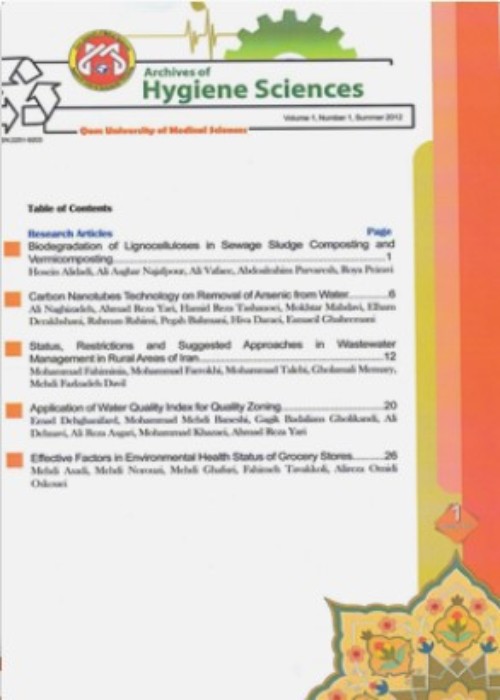The Number of Myocardial Infarction and Cardiovascular Death Cases Associated with Sulfur Dioxide Exposure in Ahvaz, Iran
Author(s):
Abstract:
Background and Aims
of the Study: Sulfur dioxide is a component of greatest concern and is used as an indicator for the larger group of gaseous sulfur oxides (SOx). Sulfur dioxide can be absorbed into your body through the nose and lungs, its reaction with the moisture in the nose and nasal cavity, and entering the circulatory system directly through the airways. The aim of this study is to assess health- effects of exposure Sulfur dioxide in Ahvaz city during 2012.Materials and Methods
The Sulfur dioxide data was taken from Ahvaz Department of Environment and Meteorological Organization. The different health endpoints of sulfur dioxide in Ahvaz in 2012 were calculated by a model. We utilized the relative risk values and baseline incidence measures by the WHO (Middle East) drawn from health effects association of sulfur dioxide. To use these raw data, we processed the data by Excel software, and then the impact of meteorological parameters was converted as input file to Air Q model. Finally, health-effects of exposure to sulfur dioxide were calculatedResults
According to the findings, the highest and the lowest sulfur dioxide concentrations during 2012 were observed in Downtown “Naderi” and Bureau of Meteorology “Havashenasi”, respectively. The average annual concentration of measured sulfur dioxide was 160 μg/m3. Total numbers of myocardial infarction and cardiovascular death attributed to sulfur dioxide were respectively 37 and 165 in 2012.Conclusions
This could be due to higher gasoline consumption of vehicles, oil industry, steel, and heavy industries in Ahwaz. Prevention and control measures to reduce people’s exposure to sulfur dioxide pollution can very useful.Keywords:
Language:
English
Published:
Archives of Hygiene Sciences, Volume:3 Issue: 3, Summer 2014
Page:
112
https://magiran.com/p1340484


